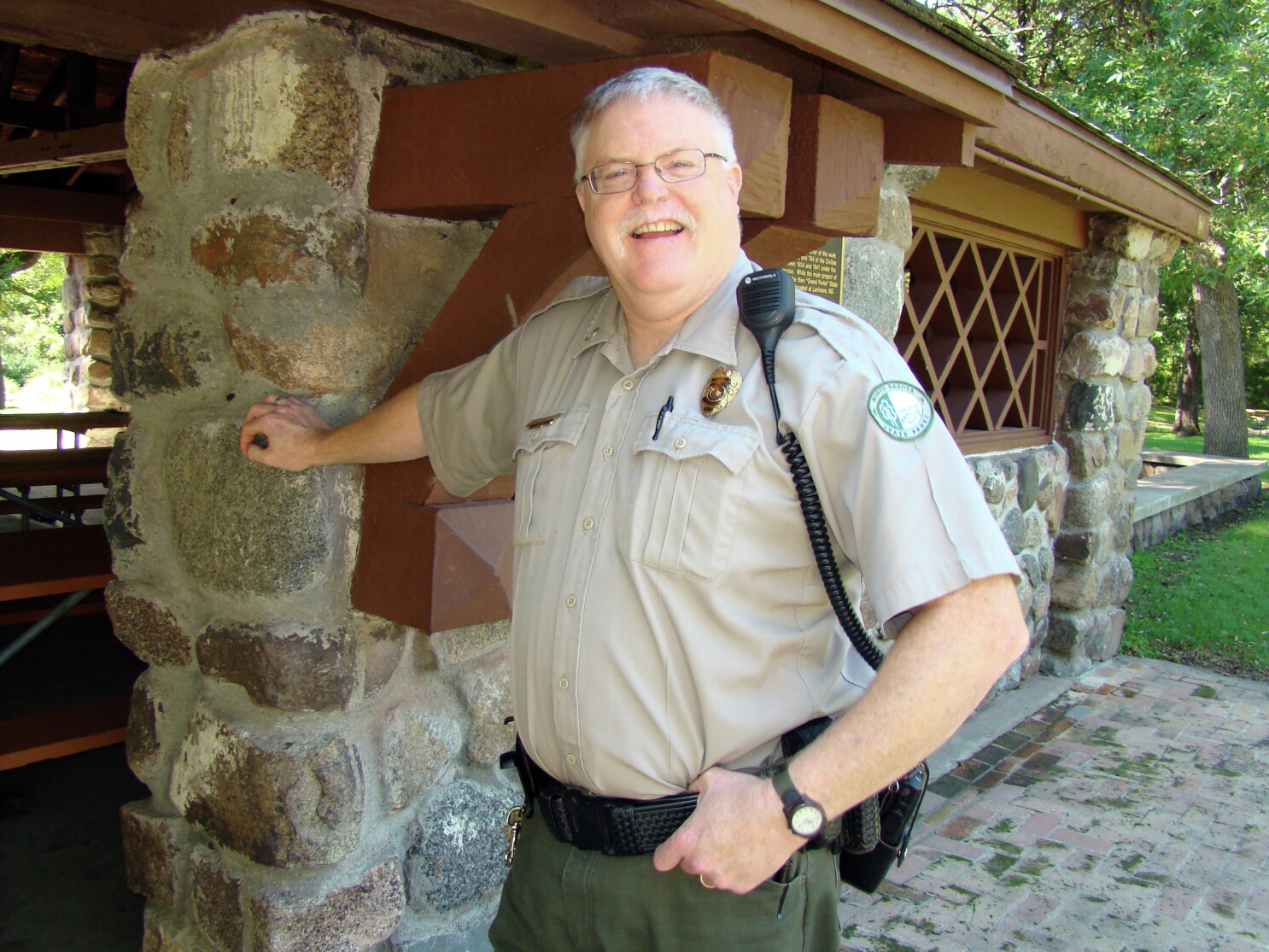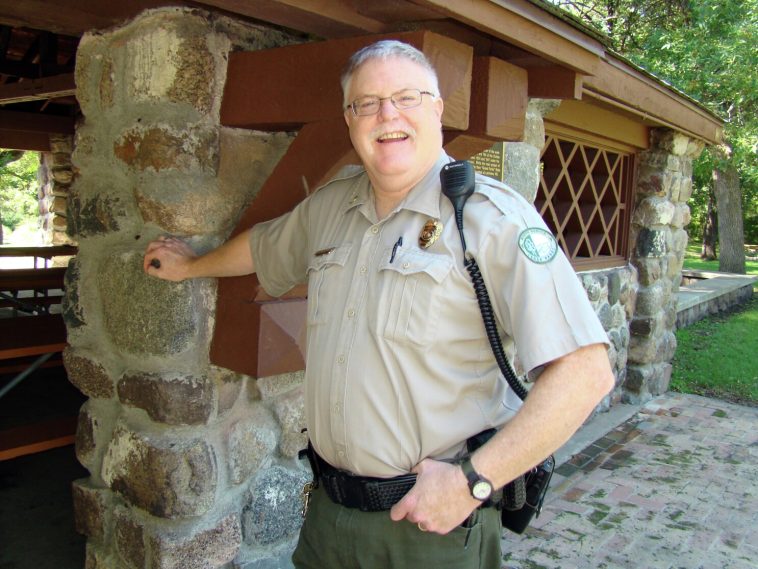
New Leadership, New Horizons: An Opinion on the Transition at Turtle River State Park
The recent appointment of Michelle Cunningham as the park manager at Turtle River State Park has caught the attention of those who cherish North Dakota’s natural treasures. With a keen blend of operational savvy and entrepreneurial flair, Cunningham has stepped into a role that not only demands efficient management of park resources but also involves engaging the local community with a fresh perspective. In this editorial, we’ll take a closer look at this pivotal transition, discussing the park’s new chapter, the challenges ahead, and the promising opportunities that lie in wait for Turtle River State Park and its supporters.
Understanding a New Chapter for Turtle River State Park
Turtle River State Park has long been a beloved destination for outdoor enthusiasts, families, and those simply looking for an escape into nature. The park’s rich tapestry of scenic views, recreational trails, and wildlife habitats means that it is a key component of North Dakota’s vast natural landscape. However, managing such a complex ecosystem comes with its own set of tricky parts, tangled issues, and even some nerve-racking challenges. As communities rally around their local parks, the appointment of a new leader presents a moment of reflection and recalibration—a chance to acknowledge past successes while setting the stage for new innovations.
Michelle Cunningham brings both experience and enthusiasm to the fore, making her appointment a super important moment. Her leadership may well pave the way for an era where casual visitors, long-time regulars, and local organizations work together more closely to safeguard Turtle River’s delicate balance between recreation and conservation.
Michelle Cunningham: A Fresh Take on Park Operations
Cunningham’s career stands out for her diverse background, which includes a substantial tenure managing state parks in South Carolina. In those roles, she not only oversaw operations but also successfully led teams, improved physical infrastructure, and built strong partnerships with local organizations. Her transition into the role at Turtle River State Park underscores a trend in public service where a blend of hands-on experience and strategic insight forms the backbone of effective park management.
In her own words, Cunningham acknowledges both the honor and the responsibility inherent in taking the wheel. “It’s an honor to step into this role,” she remarked, emphasizing her commitment to making Turtle River a welcoming and engaging place for all visitors. Her background in entrepreneurship further complements her public sector expertise, providing her with the innovative mindset needed to approach the subtle parts of park management in new and productive ways.
Embracing Entrepreneurial Spirit in Public Service
- Operational Excellence: Cunningham’s record of driving efficiency in park operations is a promising sign for the future of Turtle River.
- Community Engagement: Her proactive approach in fostering relationships with local organizations indicates that community input will play a key role in upcoming initiatives.
- Strategic Innovation: Combining the mindset gleaned from entrepreneurship with her public service experience positions her uniquely for modern park management challenges.
This blend of entrepreneurial innovation and commitment to robust public service offers exciting prospects for a park that has always straddled the line between revitalizing traditional practices and welcoming fresh, inventive approaches.
Community Involvement in State Parks: Strengthening Local Bonds
A park like Turtle River is more than just a region on a map—it’s a vibrant part of the community. The new managerial direction under Cunningham holds the promise of deeper community ties and broader public participation in park activities. By engaging residents in decisions that affect park operations, public infrastructure projects, and natural preservation methods, the park can offer tailored experiences that meet local needs while attracting new visitors.
Ways to Foster Deeper Community Ties
Below are some actionable ideas that align with the new leadership’s vision for community engagement:
- Volunteer Programs: Organizing regular volunteer days for clean-ups, habitat restoration, and public events can invite community members to actively contribute to the park’s well-being.
- Local Partnership Initiatives: Working with local businesses, schools, and nonprofit organizations to host educational and recreational events can enrich both the park experience and community vitality.
- Public Feedback Sessions: Hosting monthly forums or town-hall meetings ensures a platform for visitors to share their views, suggestions, and concerns, thereby fostering a sense of collective ownership.
By putting these measures into practice, Turtle River State Park can turn community interaction into an essential, ongoing part of its operational blueprint. It’s a step-by-step process of listening, engaging, and evolving together—a strategy that holds the potential to transform a quiet park into a dynamic hub of local activity.
Challenges and Opportunities in State Park Management
Managing a state park is never without its complications. The job entails balancing conservation efforts with the needs of a diverse public, addressing tangled issues of resource allocation, and ensuring that every visitor’s experience remains both enjoyable and educational. For a new manager like Cunningham, every decision brings along both promise and mixed feelings, as the tricky parts of park management often hide many subtle concerns.
Key Areas of Focus for Overcoming Obstacles
The following are areas where challenges may surface and where a proactive, thoughtful approach is essential:
- Resource Management: Allocating budgets and protecting natural resources demand constant attention. Balancing the cost of technology upgrades and maintenance with the need to preserve the park’s pristine beauty is a continuous juggling act.
- Infrastructure Improvement: Upgrading facilities without disrupting the natural landscape is an ongoing concern. Improved pathways, enhanced visitor centers, and updated safety protocols must all be weighed against environmental impacts.
- Environmental Conservation: Protecting wildlife and delicate ecosystems calls for innovative strategies that reinforce sustainable practices while addressing public usage.
Each of these areas is loaded with issues that require not only operational expertise but also the ability to get into the nitty-gritty details of each project. Cunningham’s experience in managing multiple projects simultaneously will be key to steering through these complexities, ensuring that both the physical space and the surrounding natural environment receive the attention they deserve.
Lessons from Past Leadership: Reflecting on Larry Hagen’s Legacy
As new management unfolds, it is essential to remember the contributions of previous leaders. Larry Hagen, who managed Turtle River State Park since November 2015 before retiring this past summer, laid a critical foundation. His journey was marked by steady guidance, a deep-rooted commitment to the park, and a successful tenure that earned the trust of both the public and park staff. By stepping away from a long service, Hagen leaves behind a legacy that has set high standards, something Cunningham now has the opportunity to build upon.
Hagen’s legacy serves as a reminder that effective park management is not a static role but one that evolves over time—with each leader contributing their own fine shades to the park’s overall story. For those who have enjoyed Turtle River’s many offerings over the years, these changes might initially appear intimidating. However, they also open up space for progress, new ideas, and additional community benefits that are full of potential.
Reflections on Leadership Transition
| Aspect | Hagen’s Contribution | Cunningham’s Potential Impact |
|---|---|---|
| Operational Stability | Built a stable administrative framework | Modernize the system while retaining strategic continuity |
| Community Engagement | Established trust among local groups | Expand community participation programs |
| Infrastructure Enhancements | Maintained essential services and facilities | Introduce sustainable and innovative improvements |
| Resource Allocation | Efficient use of limited resources | Integrate entrepreneurial solutions to maximize efficiency |
Looking at these elements side-by-side helps clarify what has been effective in the past and the areas that may benefit from fresh ideas. It’s an ongoing process of learning from the past while not shying away from the twists and turns of present needs. In this sense, the baton is passed in a way that respects past achievements and anticipates future challenges.
Turtle River State Park: A Natural Jewel in North Dakota
Turtle River State Park is more than just a patch of land; it’s a vibrant ecosystem and a living testament to North Dakota’s commitment to preserving natural beauty while encouraging outdoor joy. From its meandering streams to its open fields, the park has always been a canvas where nature and human enthusiasm learn to coexist in harmony. Every visit to the park is a reminder of art in nature—crafted not by human hands but by the subtle parts of time and season.
Discovering the Unique Features of Turtle River State Park
Let’s take a closer look at some of the park’s distinctive attributes:
- Scenic Landscapes: The park offers extensive views that let visitors appreciate the natural expanse of North Dakota. Whether it is quiet moments by gently flowing waters or breathtaking views from hiking trails, each landscape tells a story of nature’s resilience.
- Outdoor Recreation Opportunities: From fishing and canoeing to hiking and bird watching, Turtle River serves as a playground for both the adventurous and those seeking occasional respite from busy lifestyles.
- Wildlife and Ecosystem Conservation: The park is a safe haven for local wildlife species, with dedicated conservation programs that balance public access and preservation effectively.
These hidden complexities of park life remind us that every element—from the smallest detail in the ecosystem to the seemingly routine visitor services—plays a super important role in delivering a well-rounded public experience. Cunningham’s vision is to not only carry forward these attributes but also enhance them through strategic improvements that address the subtle parts of operational challenges.
Taking a Closer Look at Strategic and Operational Changes
With a backdrop of evolving environmental policies and increased public engagement, the role of a state park manager is continually adapting. For Cunningham and her team, the task ahead involves making strategic decisions that impact every visitor’s experience while accommodating future growth. The new strategic plan is bound to face nerve-racking challenges such as environmental protection, resource allocation, and infrastructure modernization.
Key Strategic Areas Under Consideration
- Modernizing Infrastructure: Upgrading old facilities and integrating sustainable technology will be crucial. This includes adding eco-friendly energy solutions and improving safety protocols on trails and visitor centers.
- Boosting Community Programs: Developing educational programs that highlight civic responsibility and environmental stewardship can be a game-changer. Initiatives such as guided nature walks, interactive workshops, and volunteer-led projects form the backbone of such efforts.
- Enhancing Visitor Experience: Introducing new amenities while maintaining the park’s rustic charm requires a careful balance. This might involve rethinking layout designs and ensuring that information hubs are not only functional but also inviting.
By getting into these crucial areas and looking at each fine detail thoughtfully, Cunningham’s approach aims to cater to both the long-time visitors who cherish tradition and the new audience who might bring fresh perspectives and ideas.
Balancing Entrepreneurial Vision and Public Service in Park Management
One of the most striking elements of Cunningham’s background is her ability to fuse entrepreneurial vision with the demands of public service. Over the years, the need to think outside the box has become a recurring theme in how public lands are managed. It is no longer enough to simply maintain what exists; managers must innovate to keep pace with shifting public interest and environmental expectations.
How Entrepreneurial Strategies Benefit Public Parks
Entrepreneurial initiatives in park management can lead to improved services and operational efficiency. Here are some ways in which this approach might transform Turtle River State Park:
- Resource Innovation: By exploring alternative funding sources and partnerships, such as grants, sponsorships, or eco-friendly businesses, parks can access additional resources without solely relying on traditional public allocations.
- Enhanced Visitor Engagement: Incorporating modern technology—for instance, interactive apps that provide park maps and educational content—can enrich the visitor experience while creating broader appeal for younger audiences.
- Agile Operations: Fast-tracking decisions on maintenance and upgrades through business-minded strategies may lead to more responsive and adaptive park management.
These innovative approaches are not free of their own nerve-racking turns. However, when balanced with the critical needs of public service, they can lead to a revitalized experience for the park’s diverse array of users.
Community and Environmental Engagement: Paving the Way Forward
The future of Turtle River State Park lies at the intersection of community engagement and environmental sustainability. Cunningham’s leadership could help spark a new era in which both local residents and government agencies actively contribute to shaping the park’s destiny. This period of change, while intimidating for some, is also filled with untapped potential waiting to be nurtured and cultivated.
Effective Strategies for Community-Driven Environmental Stewardship
A successful blend of community and environmental engagement involves several tangible strategies. Some of these include:
- Regular Environmental Workshops: Hosting sessions that educate the public on conservation techniques, local wildlife, and sustainable practices can make conservation efforts relatable and approachable for everyday visitors.
- Enhanced Communication Channels: Utilizing digital platforms to gather opinions, share park updates, and promote upcoming community events ensure that every voice is heard. Social media, dedicated newsletters, and interactive websites serve as modern tools to strengthen community bonds.
- Collaborative Projects: Initiatives that bring together local schools, nonprofits, and business communities—such as tree planting days or clean-up drives—not only boost public involvement but also create tangible improvements on the ground.
Such initiatives might require extra effort and planning, especially when trying to address the tricky parts that come along with large-scale projects. However, the payoff is immense: a renewed sense of ownership among community members and a collective push towards ensuring that Turtle River retains its natural allure for generations to come.
The Role of Policy and Funding: Steadying the Course
No conversation about park management is complete without addressing the inevitable issues concerning policy and funding. Public parks face a persistent balancing act between securing funds, approving new projects, and adhering to regulations that protect natural resources. Policy decisions, often influenced by local, state, and federal guidelines, can sometimes seem intimidating due to their layered, complicated pieces. Yet, these same policies are essential for establishing a stable framework within which parks can thrive.
Funding and Policy: Managing Your Way Through Bureaucracy
Below is a look at some of the main policy areas that are shaping the future of state parks like Turtle River:
- Environmental Regulations: Ensuring that all park operations meet or exceed environmental standards is a super important aspect of park management. Adopting green practices not only protects local ecosystems but also sets an example for sustainable living.
- Budget Allocations: The way funding is distributed often dictates what projects can be initiated. Strategic use of limited funds is essential for maximizing visitor services while safeguarding the park’s natural beauty.
- Public-Private Partnerships: Collaborations between government bodies and private enterprises can lead to innovative projects that might otherwise be too expensive or complex to manage solely with public funds.
Working through these issues requires a delicate balance of innovation and respect for established guidelines. Cunningham’s challenge, and indeed her opportunity, is to use her entrepreneurial background to find creative funding solutions while ensuring that environmental commitments remain front and center.
Looking to the Future: A Collaborative Roadmap for Park Success
The changes at Turtle River State Park represent more than just a shift in leadership—they signal a collaborative journey ahead, one that embraces both the local community and the wider region’s environmental ambitions. As Cunningham settles into her role, there is a widespread hope that her blend of experience and new ideas will inspire both staff and visitors alike, turning potential hurdles into shared successes.
What the Future Could Hold
- Innovative Program Development: Upcoming years could feature unique programs designed to nurture local talent, educate visitors, and celebrate the vibrant ecosystem of Turtle River.
- Upgraded Park Facilities: With a focus on modernizing infrastructure, visitors might soon enjoy enhanced facilities that blend comfort with sustainability, all while retaining the park’s natural character.
- Stronger Community Partnerships: By building closer ties with local organizations and stakeholders, the park may evolve into a flourishing hub of environmental education and outdoor recreation.
Expectations are high, but so is the reality of working through the twists and turns that define modern public service management. Every new project will require input from many different angles, and every small victory will serve as a reminder of the power of collaborative effort.
Conclusion: Linking the Past, Present, and Future of Turtle River State Park
Michelle Cunningham’s appointment as the new park manager is a defining moment for Turtle River State Park. While change might initially feel overwhelming for some, it also opens the door to exciting new opportunities, drawing on both a proud legacy and an innovative future. By steering through the challenging bits of operational management with a keen eye for sustainable practices, engaging local communities, and fostering innovative strategies, Cunningham sets the stage for Turtle River to evolve while staying true to its conservation roots and community spirit.
In reflecting on the park’s history—with Larry Hagen’s well-regarded tenure—and looking forward to the new initiatives under Cunningham’s leadership, it becomes clear that this transition is about more than administrative change. It is about charting a course through the subtle parts of park management that require careful thought, hard work, and the passionate support of everyone who cherishes this local gem. Turtle River State Park stands as a testament to what public spaces can achieve when diverse ideas and committed leadership come together.
This moment invites all of us to get into the details, to appreciate both the small distinctions and the broad strokes that define our natural surroundings. As the park embarks on its next chapter, there is a renewed sense of unity and anticipation—a collective promise that even as challenges come with their tricky parts and intimidating decisions, the journey forward is filled with promise, progress, and a shared love for our outdoor treasures.
For visitors, community members, and environmental advocates alike, Turtle River State Park is not just a destination but a symbol of ongoing collaboration between the past, present, and future. The new leadership, armed with innovative plans and a dedication to the park’s core values, proves that even in the realm of public service, the spirit of entrepreneurship and community engagement can drive meaningful, lasting change.
In the end, we are all invited to take a closer look, to dig into the details, and to celebrate the delicate balance that makes Turtle River more than a park—it makes it a living, breathing part of North Dakota’s heart and soul. As we watch this chapter unfold, our hopes are tied to the belief that thoughtful leadership and community engagement are keys to not only preserving but also enriching the unique outdoor experience that Turtle River State Park has long symbolized.
Originally Post From https://www.grandforksherald.com/sports/northland-outdoors/new-park-manager-begins-position-at-turtle-river-state-park
Read more about this topic at
New Park Management
Kings Island names new Park Manager


